Dear clients, welcome to choose one of the 15 days China tours including Yangtze River Cruise designed by China Tour Star. In this itinerary, you will go to seven cities in China. Setting off from Beijing, you will visit the Forbidden City and Temple of Heaven to feel the imperial atmosphere of this city. Walking through Xi’an, you will go to Terracotta Warriors and Horses Museum to appreciate the superb craftsmanship of ancient Chinese. Taking the Li River Cruise, you can enjoy the world-famous Guilin scenery along the river. Your Yangtze River tours China starts from Chongqing when you take the Yangtze River Cruise. During the Yangtze River Cruise tour, you can see the Three Gorges and admire the world’s largest hydroelectric plant. After the Yangtze River Cruise tour, you will go to Shanghai and visit the modern Shanghai Tower and the traditional Bund that coexist in the metropolis. The last destination of this 15-day China tour with the Yangtze River Cruise is Hong Kong. You can visit the city landmark – Victoria Peak and overlook the whole city on the top. Hope you have an enjoyable tour!

Welcome to join our Yangtze River Cruise Tour! Today you will come to the first stop of this tour, Beijing. After arrival, our guide will wait for you at the airport. After airport pick-up, you will be transferred to the hotel to check in and have a good rest. As the capital of China, Beijing is a national central city with many functions. It covers 16,410.54 square kilometers and has a population of 21.54 million. With a long history of more than 3,000 years, it has many scenic places and historical sites, such as the Forbidden City, the Summer Palace, and the Great Wall.
After breakfast, you will visit Tian’anmen Square. Covering 440,000 square meters, it is the world’s largest city-center square. With many important events happening here, it is a witness to Chinese history. You may notice a pair of marble pillars in front of the Tian’anmen Gate Tower. They are engraved with patterns of auspicious clouds in the upper part. On the top of the pillar lies a mythical creature named “Hou” facing south and looking out of the Forbidden City in the north. It aimed to warn the emperors not to indulge themselves in having fun outside. Instead, they should work hard on national affairs. Interestingly, there are another two marble pillars with “Hou” looking inside the Forbidden City behind the Tian’anmen Gate Tower, which aimed to warn the emperors to go out to know about people’s lives.
Walking through the Tian’anmen Gate Tower, you will enter the Forbidden City (closed each Monday). It used to be the imperial place for 24 emperors in the Ming (1368-1644) and Qing (1636-1912) Dynasties. Completed in 1420, it is China’s best-preserved imperial palace. There are 9,999 and a half rooms in the Forbidden City. About this number, there is folklore. When Emperor Yongle planned to build the Forbidden City, he wanted to build 10,000 rooms to show his authority. But one day, the emperor dreamed about the Jade Emperor (the Emperor of Heaven) who said that there were 10,000 rooms in the Heavenly Palace. Then, the Jade Emperor warned that the number of rooms in the Forbidden City should not be more than that in the Heavenly Palace. The next day, Emperor Yongle told this dream to Liu Bowen who was responsible for the construction project and asked for a solution. Liu proposed to build 9,999 and a half rooms. In this case, it would display imperial dignity without offending the Jade Emperor. Finally, Emperor Yongle accepted this suggestion.
In the afternoon, the Temple of Heaven will be our next destination. Finished in 1420, it served as the place to hold the heaven-worshipping ceremony during the Ming and Qing Dynasties. There are two major buildings in the Temple of Heaven. One is the Circular Mound Altar in the south to worship heaven on Winter Solstice every year. The other is the Hall of Prayer for Good Harvests to pray for a bumper harvest of all crops in spring. In the northeastern part lies Seven Stars Rocks. However, there are eight rocks on the ground. There is a story about it. One day before the Temple of Heaven began to be built in 1403, Emperor Yongle of the Ming Dynasty dreamed the Big Dipper dropped from the sky. Then the emperor decided to construct the temple at the place where the Big Dipper dropped and seven stones were placed here to symbolize the seven stars of the Big Dipper. This is the source of the original seven stones. And the eighth stone was put here in the Qing Dynasty after the Manchu’s army entered Beijing in 1644. To show the Manchu is part of the Chinese nations, Emperor Qianlong issued an edict to put another stone here. The eight stones became a symbol of the unity of the Manchu and Han people.
Next, we will go to the Summer Palace, a royal garden built by Emperor Qianlong in the Qing Dynasty. With more than 3,000 artificial ancient structures, it was inscribed in the World Heritage List as one of the four most famous gardens in China, together with Chengde Mountain Resort, Humble Administrator Garden and Lingering Garden which are both in Jiangsu. There is the famous Seventeen-Arch Bridge in the palace. It is 150 meters long with 17 arches. In addition, there are 544 stone lions engraved on the bridge columns. All these stone lions are in different shapes from each other. Among them, there is a lovely stone lion with one foreleg raised, which looks like a fortune cat. Therefore, it is called “fortune lion”.
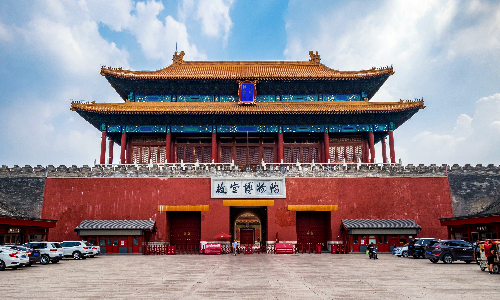
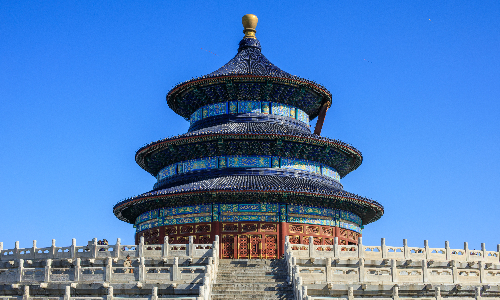
This morning, we will drive to Chang Tomb. It is more than 50 kilometers northwest of Beijing, which takes you about 70 minutes. It is the tomb of Emperor Yongle and his empress. As the largest and the best-preserved one, Chang Tomb is regarded as the top of the 13 Ming Tombs. Today it has become one of the major attractions of Beijing. There are two statements about the name, Chang Tomb. Firstly, “Chang” means predecessor in Chinese. As the first emperor after the Ming Dynasty relocated its capital in Beijing in 1420, Emperor Yongle was also the first emperor buried in Ming Tombs. So he could be respected as a predecessor. Secondly, “Chang” means sleeping in peace. Emperor Yongle wished to witness the endurance of the Ming Dynasty under the rule of his future generations after his death. Being buried here, he could overlook the capital and felt reassured, so he would sleep in peace.
After lunch, we will go to Mutianyu Great Wall built in 1368. With the well-preserved wall reaching a length of 5,400 meters, it is the essence of the Great Wall of the Ming Dynasty. One distinctive feature of the Mutianyu Great Wall is that there is a graffiti wall. We all know that the Great Wall is a place of interest, so painting or writing on it is prohibited. However, there are so many people who want to leave a mark on the wall when they climb onto the Great Wall. In view of this, the administration set up a graffiti wall for visitors to write something they want to say. Therefore, you can also write down some words when you reach the top. Standing on the Great Wall and overlooking the beautiful scenery, what will you say?
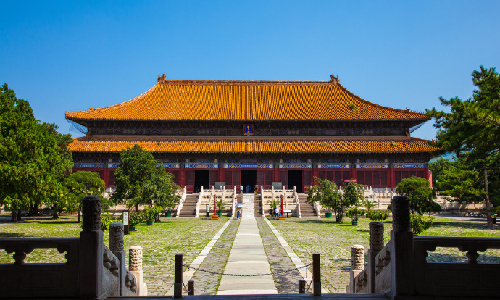
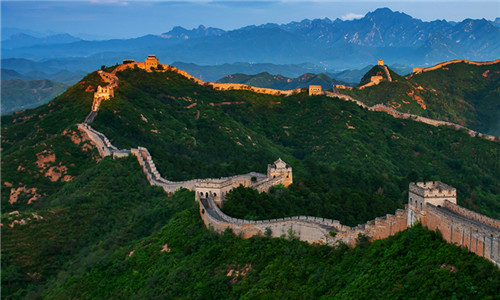
 Xi’an
Xi’an After breakfast and check-out, you will be transferred to the train station to take the estimated train G571 09:22/15:06 to Xi’an. You will have lunch prepared by our guide and enjoy it on the train. Xi’an covers a total area of 10,752 square kilometers and has a population of 10.2 million. As the start of the Silk Road, it served as the capital of 13 dynasties of ancient China. Because of this, it has been recognized as one of the birthplaces of Chinese civilization. It has turned into an international metropolis driven by its rapid development in recent decades. After arrival, you will be transferred to the hotel and check in first. Then you can have a good rest. You can visit this city by yourself if you have free time.
Located in the Lintong District of Xi’an, Terracotta Warriors and Horses Museum is 40 kilometers northeast of Xi’an. It takes you about one hour to get there by car. It was constructed as the underground army of Qinshihuang, the first emperor of the Qin Dynasty (221 BC-207 BC). It was one of the greatest archaeological findings in the 20th century and has been recognized as “the Eighth Wonder of the World”. Looking at the warriors, you may feel that they are about to fight against the enemy. For example, each of the kneeling or squatting archers in Pit No.2 has his hair tied in a knot and wears a suit of armor. They genuflect on one leg and squat on the other with their bodies leaning forward and hands pulling bows. With this gesture, you can feel a sense of tension. Terracotta Warriors and Horses Museum has also attracted many foreign leaders to visit. There was a story when former American President Ronald Wilson Reagan visited the museum in 1984. After looking at the lovely terracotta horse, he touched it from the horseback to the hip and asked jokingly, “Will it kick me?” The next day, a journalist published an article which said that the American President also learned to “pat a China’s horse’s hip”. The Chinese phrase “pat one horse’s hip” has a deep meaning of flattering. So here, the journalist explained the action of the American President with wordplay.
After lunch, our tour guide in Xi’an will accompany you to visit the Big Wild Goose Pagoda. It was first built in Ci’en Temple in 652. It was used to preserve the Buddhist scriptures and relics. The Buddhist relics were taken from India by a monk named Xuanzang. In the following years, it has been repaired several times. In this process, it has been built into a distinctive Chinese-style building with Indian elements, which represents the integration of Indian Buddhist culture into Chinese culture. There is a legend when it comes to why it is called Big Wild Goose Pagoda. Once upon a time, there were many monks in Ci’en Temple who lived an ascetic life. Later, a serious drought happened and led to widespread loss of life. Only a few monks were alive in the temple. One day, when seeing a group of wild geese flying through the sky, a monk said to himself, “We are starving to death, and I hope the Bodhisattva can help us.” Suddenly, one goose fell onto the ground. All the monks were amazed and sorrowful to the goose. They believed that it was the Bodhisattva who was trying to save them and they ate the wild goose for life. After that, they built this pagoda and named it Big Wild Goose Pagoda to commemorate the goose.
Next, we will go to the City Wall. With a length of 13.7 kilometers, it is China’s longest and the best-preserved ancient city wall. Built as a military defense in the Ming Dynasty, the wall plays an important role in studying the military, architecture, and history of the Ming Dynasty. It is a striking symbol of ancient Xi’an. There are four major gates: Changle Gate in the east, Anding Gate in the west, Yongning Gate in the south, and Anyuan Gate in the north. When putting the initial word of the four gates’ names, it is “Chang An Yong An”, which means the city Chang’an (the old name of Xi’an) will enjoy lasting peace and stability.
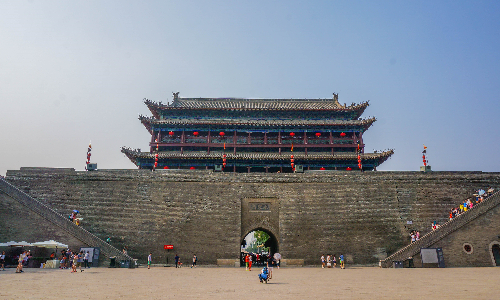
 Guilin
Guilin Today, immerse yourself in the historical atmosphere in Shaanxi History Museum (closed each Monday). It was built in 1991 with a grand hall in the center and four small halls in the four corners. With a construction area of 55,600 square meters, it houses over 370,000 pieces of cultural relics in eight categories, including bronze wares, frescoes of the Tang Dynasty, porcelains, and so on. Among all the collections, the Bronze Tiger-Shaped Tally is the most attractive one. It was used as a token during the Warring States Period (475-221) to mobilize armies in ancient China. It was split in half with the right half held by the emperor and the left half held by the general. The army could only be dispatched when the two parts went together. It is the symbol of the highly centralized military power in ancient China.
In the afternoon, you will take the estimated flight 3U3269 15:45/18:10 to Guilin. As a world-famous tourist city, the landscape in Guilin tops the whole country. It covers 27,800 square kilometers and has a population of over 5.2 million. Surrounded by lush mountains and lucid water here, you will feel relaxed in this city. After arrival, your guide will pick you up at the airport and drive you to the hotel downtown. After checking in, you can have a rest or explore the city if you are not tired.
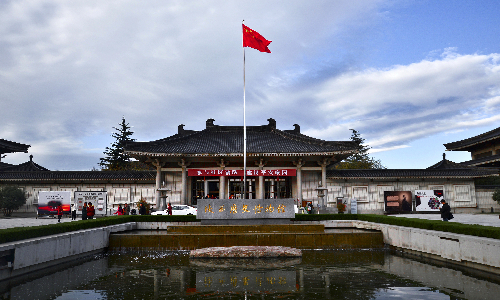
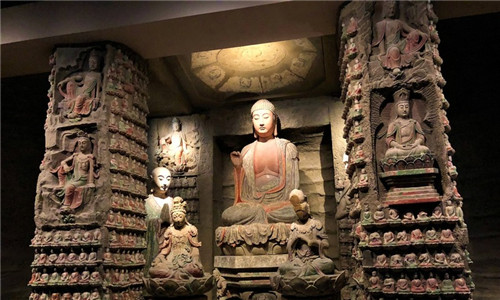
 Yangshuo
Yangshuo Guilin
Guilin After breakfast, we will enjoy the Li River on our way to Yangshuo. First, we need to take a 40-minute-drive to Mopanshan Wharf, which is 25 kilometers southeast of downtown. Then you will start your Li River Cruise. Li River is featured by the karst mountains on both sides, and is famous for the beautiful scenery alongside the river. The most attractive one is the Wangfu Mountain on the west bank. There are two special stones on the mountain. One resembles a man looking north, the other looks like a woman with her child on her back looking at the man. About the two stones, there is a legend. Once upon a time, a boat with a family of three – the husband, the wife, and the child grounded on the underwater riverbank of the Li River. The husband went uphill to look for some food but in vain. Finally, he was so anxious and suddenly turned into a stone. Later, the wife went to look for her husband. However, when she found that her husband had become a stone, she cried inconsolably and also turned into a stone.
The cruise is about 60 kilometers southward to Yangshuo and takes about 4-5 hours. You can have lunch on board during the cruise. When getting off the cruise ship in Yangshuo, you will go to West Street. It is the oldest street in Yangshuo constructed in 1674. It is paved with marble and folk houses built in the Qing Dynasty stand on both sides. It is not only a typical Chinese street but also characterized by its western elements. Therefore, it is a combination of Chinese and western culture, which brings Chinese people to a foreign culture and helps foreigners explore Chinese civilization. You can also enjoy classic Guilin food on the street. For example, there are stewed chicken, bean tea, Yangshuo Baba (glutinous rice balls), and lotus-nuts sweet soup. After that, your private driver will take you back to the hotel in Guilin. Then you can have a rest.
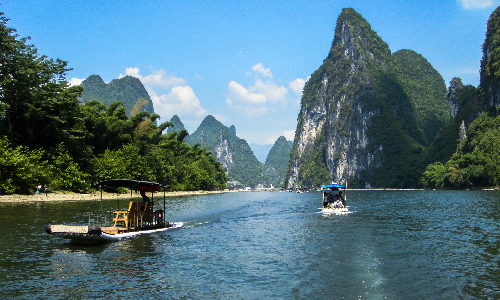
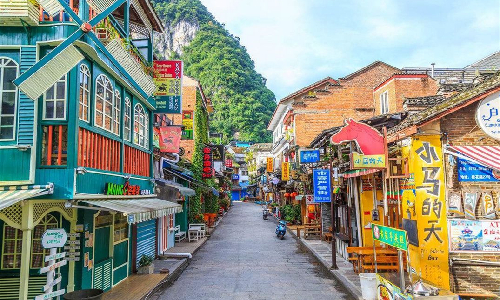
 Chongqing
Chongqing After breakfast in the hotel, you will take the estimated train D1782 10:05/15:31 to Chongqing. Your guide will prepare lunch for you and you can take it on the train. Chongqing is one of the four municipalities in China, together with Beijing, Tianjin, and Shanghai. It covers 82,402.95 square kilometers, which is 2.39 times larger than the total area of the other three municipalities. It has a population of more than 30 million. Because of the rugged terrain, it is also known as a mountain city in China. The popular food in Chongqing is hotpot. You can enjoy the spicy flavor. In addition, you will take the Yangtze River Cruise. It is a classical way to enjoy the natural charm along the Yangtze River in China. Setting off from Chongqing, you will start the Yangtze River Cruise, which is the highlight of this tour.
Upon your arrival in Chongqing, your private guide will take you to Chaotianmen Wharf to take the Yangtze River Cruise. The wharf is about 20 kilometers east of the train station, which takes more than 30 minutes to drive here. After assisting you with check-in, your guide will disembark and wait for you at the next shore excursion. The cruise will start at 21:00 and visitors should embark before 20:30. The cruise between Chongqing and Yichang is the most magnificent part of the Yangtze River Cruise. There are many ships equipped with satisfying facilities, comfortable rooms, tasty food, and entertainment venues such as bars, cafes, shopping zones, and viewing platforms. In addition, it also provides some activities with Chinese characteristics for foreign visitors.
In the morning, you can enjoy the buffet as your breakfast after a nice sleep. If interested, you can join in the morning activity to practice Tai Chi. You can also appreciate the charm of Chinese Kung Fu. It is also good for your health if you keep practicing it every day. Besides, you can sit on the deck to drink a cup of coffee or read a book. With the refreshing wind, you will feel relaxed.
Today you can have a shore excursion to visit the Shibaozhai Pagoda. It is a 56-meter-high pagoda in the Ming Dynasty. It is famous for its peculiar architectural structure and interesting stories. Known as “A Pearl on the Yangtze River”, it has attracted 220,000 people every year since it was open to the public in 1979. There is a famous Duck Cave on the top. There is a story when it comes to the name – Duck Cave. It is said that the cave was very deep and always surrounded by clouds before, and people were all curious about where the cave led. So people flew a duck to the cave with its legs being marked. Later, the duck was found on the Yangtze River. So it was evidenced that the cave could lead to the Yangtze River and it has been called Duck Cave since then.
The next shore excursion will be Fengdu “Ghost City” if you would like to pay an additional fee to the shipping company. Covering 2,190 square kilometers, it is a famous historical and cultural city set up in the Han Dynasty (202 BC-220 AD). It is most famous for the netherworld-style buildings, such as the Gate of Hell (gui men guan), Abyss Bridge (nai he qiao), and Road to Hell (huang quan lu). Besides, it is a treasure house of local folk art, a combination of Confucianism, Taoism, and Buddhism. So here you can see many buildings in different styles.
Please note that there will be different shore excursions if you take different cruise ships. The attractions you will visit along the Yangtze River will be subject to your real booking. You can enjoy the buffet on the ship at lunchtime and attend the welcoming party hosted by the captain at night.
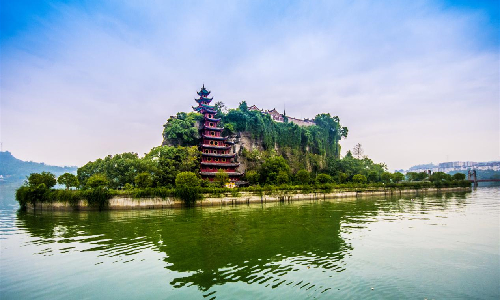
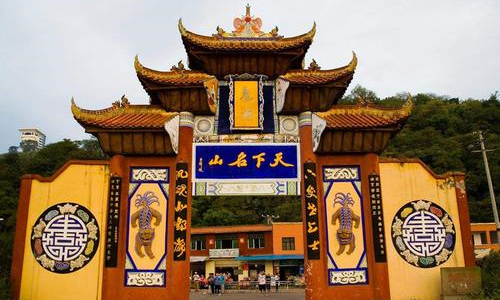
After a tasteful buffet breakfast and Tai Chi exercises in the morning, you will continue enjoying your Yangtze River Cruise. Today you will pass the Three Gorges, namely Qutang Gorge, Wu Gorge, and Xiling Gorge from west to east, the most beautiful areas along the Yangtze River. They are well-known because of their unique and fabulous natural landscapes. Qutang Gorge is the shortest but the most precipitous one among the three. Wu Gorge is the most spectacular one for grand cliffs and winding river course. Xiling Gorge is the longest one famous for the raging water in this section. At Wu Gorge, you will take a small boat to visit the Goddess Steam, which is famous for its narrow river channel and the gentle water. Among the total length of 15 kilometers, 10 kilometers of which are a primitive valley that is untraversed. You can enjoy the wild beauty of the scenery.
If you would like to explore more, an additional shore excursion to visit White Emperor City is also available with extra payment to the shipping company. It belonged to a separate regime established by Gongsun Shu, a general in the Han Dynasty. He claimed himself as the White Emperor here, so the city was called White Emperor City. It is surrounded by the Yangtze River in three directions, so it was a strategic area in ancient China. But today it has become a popular tourist attraction for its ancient buildings and natural scenery. Because of its picturesque natural beauty, it also attracted many poets to write some poems for it. Many celebrities, such as Li Bai and Du Fu, came here and eulogized the scenery in their poems. Therefore, the city has been also known as “the Poem City” in China.
Today, you can enjoy the buffet on the ship at lunchtime and attend the farewell dinner hosted by the captain at night. The crew will also put on a performance this night. You can join them and have a great evening.
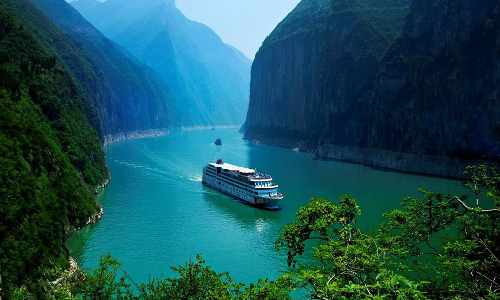
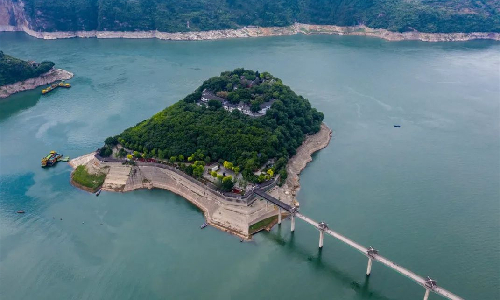
 Shanghai
Shanghai After the buffet in the morning, you will visit the Three Gorges Dam Site, the largest hydroelectric plant in the world. Now it is the highlight of the Yangtze River Cruise. There is an exhibition that shows the history of the construction of the Three Gorges Dam Site. It displays a lot of pictures and facilities used during the construction process, which can help you know more about the dam. In addition, there are four sightseeing zones, Tanziling Zone, 185 Zone, Dam Crest Scenic Area, and Memorial Park Zone. There is a viewing platform here, which is the best place to overlook the whole dam and admire the grandness of this project. In addition, there is an optional shore excursion to board a sightseeing ferry sailing through TGP Ship’s elevator, which needs extra payment. The elevator has a maximum height of 113 meters, which can help the sightseeing ferry pass through the Three Gorges Dam smoothly.
After visiting the Three Gorges Dam Site, you will be driven to Yichang Three Gorges Center Cruise Terminal. It marks the end of your Yangtze River Cruise. I believe you will have a memorable tour along the Yangtze River. Then you will be transferred to Yichang train station and take the estimated train D354 14:46/22:21 to Shanghai and continue your China tour. Shanghai is another municipality in China. It covers 6,340.5 square kilometers and has a population of 24.87 million. As a metropolis in eastern China, Shanghai is a leading city among others along the Yangtze River. In the next two days, you will go to explore this modern city. After arrival, your guide in Shanghai will pick you up at the train station and take you to the hotel to check in. Then you will have a good rest in the hotel.
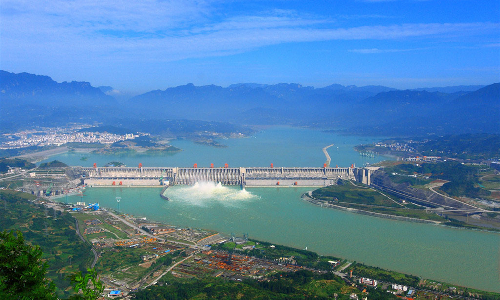
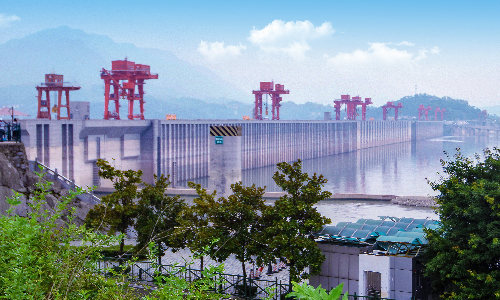
The first attraction you will visit this morning is Yu Garden (closed each Monday). It was built more than 400 years ago. This beautiful garden comprises six main scenic areas. The Great Rockery is the largest and the oldest rockery in the area of the Yangtze River with a height of 14 meters, which is composed of tons of stones. You can see the whole garden when standing on it. Sansui Hall is a major architecture of Yu Garden, which used to meet guests and hold celebrations. In ancient China, one rice seedling with three rice ears (“sui” in Chinese) is a symbol of a good harvest. So the name “Sansui (three rice ears) Hall” bears an expectation of a bump harvest.
Next, we will go to Shanghai Old Street to feel the ancient charm of this modern city. It is a multifunctional and distinctive street loaded with functions of shopping, dining, entertainment, and cultural presentation. There are many stores where you can buy some souvenirs for your families and friends. Besides, you can enjoy some delicious Shanghai food, such as small steamed bun, soup dumplings, and green sticky rice balls. Here I want to recommend the green sticky rice ball, which is a distinctive delicacy of Shanghai. It is stuffed with red bean paste covered with glutinous rice flour. And the flour is dyed with wormwood, so it is green.
After lunch, we will go to Shanghai Tower, the landmark of Shanghai. It is a 127-story building with a height of 632 meters. It is the world’s second-tallest building and is famous for the tallest observatory in China with a height of 546 meters. It is also equipped with the world’s fastest elevator with a maximum speed of 64.8 kilometers per hour. Apart from this, it is known for its sustainability. It can collect rainwater for internal use and recycle part of its wastewater. Because of this, it is recognized as the most environmentally friendly building in the world.
After that, we will go to Nanjing Road. It is a 5.5 kilometer-long road spanning from the Jing’an District to the Huangpu District. There are many stores along the road, known as one of the most bustling commercial streets in China. On the western section, there are many luxury brands for the well-heeled people while the eastern section is full of commodities with relatively fair prices. There are also some historical buildings on the road. The most attractive building on the road is the Park Hotel, which had been recognized as the tallest building in the Far East at that time. Besides, it was invested by Chinese financiers and constructed by China’s own company.
The last destination today is the Bund, Shanghai’s most famous place. It has been the most popular symbol of Shanghai for a century. Walking along the Bund, you will see a variety of buildings in more than 50 styles. The most famous building must be the Peace Hotel, which is the first modernist architecture in Shanghai. It used to be the social center of the city and a glamorous recreational place for the elite. Now it is one of the most luxurious hotels in Shanghai. There are various kinds of suites in the hotel. Besides, there are many facilities for the guests including restaurants, banquet halls, and a sightseeing garden on the top floor.
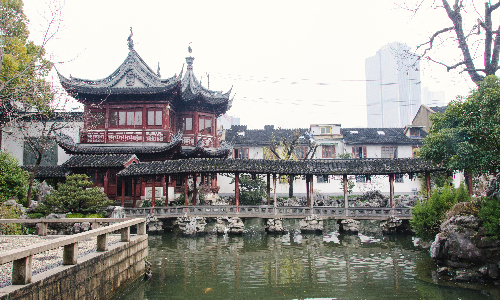
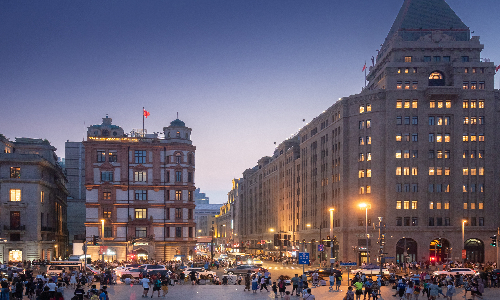
 Hong Kong
Hong Kong After breakfast, you will take the estimated flight MU507 11:30/14:05 to Hong Kong, which is the last stop of your 15-Day Yangtze River Cruise Tour in China. Hong Kong is the third financial center in the world. As a free port city and an international city, it enjoys equal popularity with New York and London. It covers a land area of 1,106.66 square kilometers with a population of more than 7.5 million. After arrival, you will go to the hotel to check in and have a good rest. In your spare time, you can explore this charming city on your own.
In the morning, we will go to Victoria Peak, which is the highest point on Hong Kong Island with a height of 552 meters. With many unique attractions, it will give you a leisurely experience. Peak Tram is the best choice to get to the top of Victoria Peak. Taking the world’s oldest and most famous Peak Tram, you will have an unforgettable memory along the way. The tram is set on a funicular railway and climbs from 28 meters to 396 meters above the sea level. Sitting in the tram when it climbs up, you will lean back unconsciously. Looking outside, you will find the trees and buildings all lean backward. Taking Peak Tram to the top, you can have a panoramic view of the city.
Then we will go to Repulse Bay to enjoy the sand and water. It is one of the most popular beaches of Hong Kong because of its clean water and large white sandy beach. Because of this, swimming is an activity favored by both locals and visitors. After that, you can enjoy sunbathing on the beach, lying on the beach and burying your legs in the sand. Besides, you can play sports in the free beach volleyball area. When you are hungry, you can find fresh seafood in the nearby restaurant as your lunch.
At last, you will go to the Stanley Market to buy some souvenirs for your family and friends. You can find a variety of things in the market. We recommend that you can buy silk garments, paintings, and jade wares in the market. They are all exquisite things with local features and can be carried easily. I believe your friends will like these things.
In the afternoon, you can go wherever you like to explore the city by yourself.
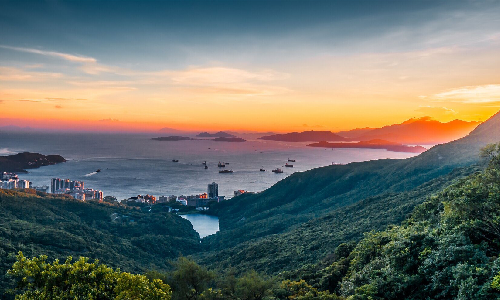
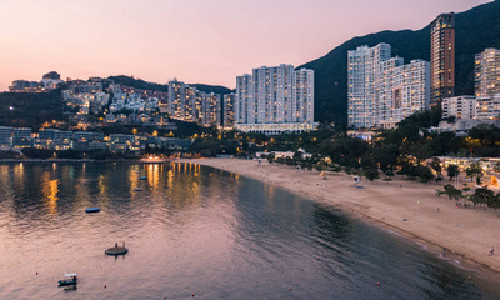
Today marks the end of your 15-Day China Yangtze River Cruise Tour with Hong Kong. Your guide will take you to the airport and say goodbye to you. I wish you a happy journey home and hope to serve you again in other cities of China.
Author: Liu Jingjing
Proofreader: Vivian Zhou
| City | Five Star hotel list | Four Star hotel list |
|---|---|---|
| Beijing | Sunworld Dynasty Hotel Beijing Wangfujing | Sunworld Hotel Wangfujing |
| Xi'an | Tianyu Gloria Grand Hotel Xi'an | Sunworld Dynasty Hotel |
| Guilin | Lijiang Waterfall Hotel | Guilin Bravo Hotel |
| Yangtze River Cruise | Victoria Anna | Victoria Anna |
| Shanghai | Ocean Hotel Shanghai | Courtyard by Marriott Shanghai Central |
| Hong Kong | Harbour Grand Kowloon | Harbour Plaza North Point Hotel |
 |
![]() About your child or infant, please contact us for a discounted price.
About your child or infant, please contact us for a discounted price.



We started with a few days in Beijing & ended in Shanghai, from where we visited the Forbidden City and Great Wall. In between we visited Terra Cotta Warriors Museum, Panda Base, Shanghai Disneyland.

We had a wonderful holiday in China which will remain long in the memory. China is a breathtakingly beautiful country full of splendid temples and palaces, mountains and rivers, peaceful rural scenes and bustling shopping streets.
 QUICK ENQUIRY
QUICK ENQUIRY